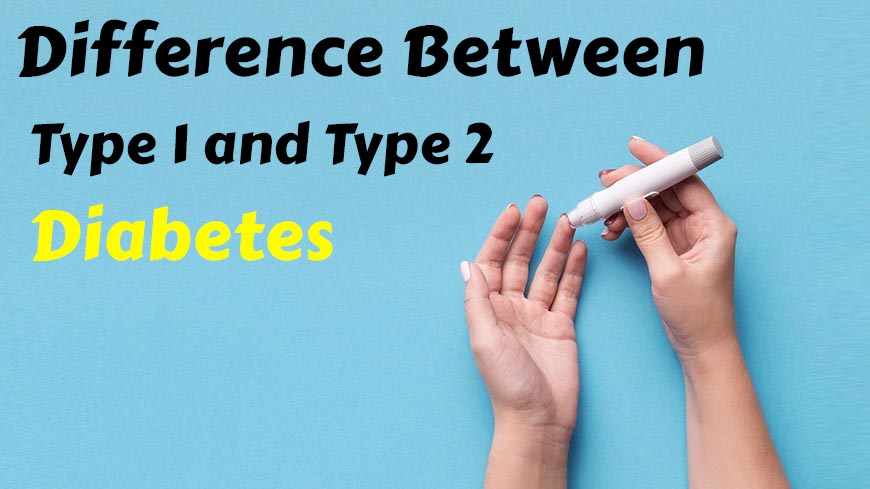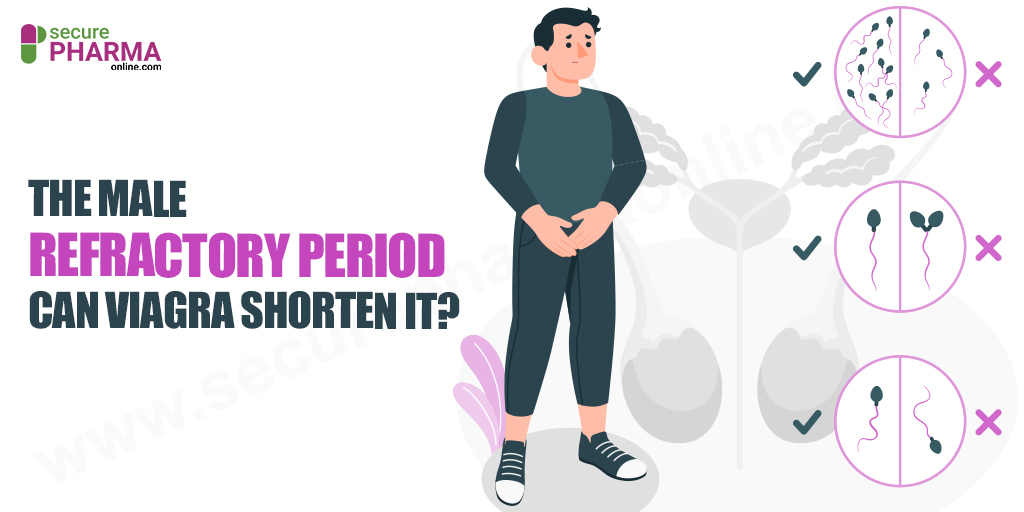Type 1 vs Type 2 Diabetes: What’s The Difference?

- What is Diabetes?
- Symptoms of Type 1 & Type 2 Diabetes
- What Causes Diabetes?
- How Universal is Diabetes?
- Type 1 & Type 2 Diabetes: Risk Factors
- Lifestyle Changes to Reduce the Risk of Type 2 Diabetes
- Type 1 & Type 2 Diabetes: Diagnosis
- Type 1 & Type 2 Diabetes: Treatment
- Type 1 & Type 2 Diabetes: Diet Changes
- Wrapping Up
If you’re looking for some information on the difference between type 1 & type 2 diabetes, then this is the perfect blog for you. In this article, you’ll learn:
- What is Diabetes?
- Types of Diabetes
- Symptoms, Causes, Risk factors of Type 1 & Type 2 Diabetes
- Lifestyle & Dietary Changes to Deal with Diabetes
So, without wasting any more time, let’s get started.
What is Diabetes?
To put is simply, Diabetes is a disease that occurs when there is too much sugar in your blood.
There are 2 types of Diabetes: type 1 & type 2.
Both types are chronic and affect glucose or the blood sugar regulated by the body. Glucose is needed by the body cells to function and for the glucose to enter the cells insulin is needed. Insulin can rightly be called the key for the lock called glucose.
People with type 1 diabetes do not produce insulin. This means these people don’t have the key.
People suffering from type 2 diabetes do not react to insulin as they should. And in the later stages, they do not even make sufficient insulin. This can be termed with an improper functioning key.
Both diabetes types can pave the way to high glucose levels chronically. And this heightens diabetes complications risks.
With this said let us first see the common symptoms of diabetes as there are different diabetes types.
Symptoms of Type 1 & Type 2 Diabetes
Both diabetes types, if not managed, share numerous identical symptoms, including:
- Recurrent urination
- Feeling thirsty
- Constantly feeling hungry
- Highly fatigued
- Blurred vision
- Difficulty in healing cuts
Type 1 diabetes people may even undergo mood swings, irritability, and unintentional weight loss.
Type 2 diabetics may even have tingling and numbness in feet and hands.
Though most of the signs of type 1 and type 2 diabetes look alike, they represent in completely different ways.
Most of the type 2 diabetics will not show symptoms for years together.
Type 2 diabetics develop symptoms frequently as time lapses.
Few type 2 diabetics don’t have symptoms altogether and do not even discover their situation until things get complicated.
Type 1 diabetes symptoms develop swiftly mostly within many weeks; that’s why, it was earlier called Juvenile diabetes, and it develops either during childhood or adolescence. However, it may also develop in later stages of life.
What Causes Diabetes?
Both the diseases, though, have the same names, they are unique and have different causes.
Type 1 Diabetes: Causes
The immunity system is in charge of fighting invaders such as bacteria and viruses.
In type 1 diabetics, the immunity system mistakes to take the body’s healthy cells as invaders. And as such, it attacks and kills the beta cells present in the pancreas which produce insulin.
Once these cells are killed the body’s capacity to produce insulin gets decreased.
Researchers even now aren’t aware why the immune system attacks its cells. They believe probably environmental or genetic factors such as exposure to viruses could be the reason.
Type 2 Diabetes: Causes
People suffering from type 2 diabetes will be resistant to insulin however, the insulin is produced by the body but it cannot be used effectively.
Studies are not sure why few people are insulin resistant and while others are not. Probably excessive weight and lifestyle could be the factors.
Other genetic and environmental factors may also contribute.
When you develop type 2 diabetes, the pancreas will aim to compensate by secreting additional insulin. Because the body is incapable to use insulin effectively, glucose will deposit in the bloodstream.
How Universal is Diabetes?
Type 2 diabetes is more common than type 1. As per the National Diabetes Statistics Report 2017, there are 30.3 million diabetics in the US alone. Amongst them, 90-95% are type 2 diabetics.
The percentage of diabetics gets increased with age. Lesser than 10% of the common public are diabetics whilst 65 and older are 25% diabetics. Less than 0.18% are diabetics in the age group below 18.
In fact, the occurrence of diabetes is so common that you can find machines that you can use to test for Diabetes on your own at home.
Both the genders have the same ratio of diabetics but few races are more prone to diabetes.
Type 1 & Type 2 Diabetes: Risk Factors
There are a number of factors that could put you at the risk of developing diabetes. Some of the common ones are mentioned below.
Risk Factors for Type 1 Diabetes
- Family history: People with a parent or sibling with type 1 diabetes have high chances of being diabetics themselves.
- Age: Any age is good for type 1 diabetes but it is frequent amongst adolescents and children.
- Geography: The farther away you are from the equator the more are the chances of being type 1 diabetic.
- Genetics: few genes increase the risk of type 1 diabetes.
Type 1 diabetes cannot be prevented.
Risk Factors for Type 2 Diabetes
- Prediabetes (slightly increased blood sugar levels)
- Obesity
- Diabetic patient in the family
- Old age (Above 45)
- No physical activities
- Gestational diabetes
- Had polycystic ovarian syndrome
Lifestyle Changes to Reduce the Risk of Type 2 Diabetes
It is possible to lessen the risk of being affected with type 2 diabetes with a few lifestyle changes.
- Maintain a proper weight
- Lower additional weight
- Increase activity levels
- Have a balanced diet
- Reduce sugar intake
Type 1 & Type 2 Diabetes: Diagnosis
The initial test for both diabetes types is called the glycated hemoglobin (A1C) test. It is a blood test to determine the average blood sugar level for the last 2 or 3 months.
An A1C level of 6.5 or higher connotes diabetes.
Type 1 & Type 2 Diabetes: Treatment
There is no cure for type 1 diabetes.
Type 1 diabetics do not produce insulin and so regular insulin injection into the body should be done.
Few people administer injections into places like buttocks, arms, and stomach many times a day. Few others use insulin pumps which are small tubes; while some rely on medicines to control blood sugar.
Testing sugar levels is a key part of managing type 1 diabetes as the glucose levels can go down and up frequently.
Type 2 diabetes can be managed and also reversed with proper exercise and a good diet.
Lifestyle changes and doctor’s guidance is needed so that the insulin is used effectively. Blood sugar monitoring is also essential for diabetes management as it is the only means to know if your daily targets are reached.
Type 1 & Type 2 Diabetes: Diet Changes
A change in your daily diet can reduce the negative effects of diabetes.
Diet for Type 1 Diabetes
If you are a type 1 diabetic ask your doctor to know how much insulin quantity is to be injected following the consumption of certain types of foods. For instance, carbohydrates produce more glucose and to counterattack this you need to know how much insulin is needed.
Here’s a detailed diet guide for Type 1 Diabetic patients.
Diet for Type 2 Diabetes
These type 2 diabetics need to concentrate on healthy eating. Losing weight is a common part of a type 2 diabetes diet and the low-calorie plan is needed. Junk food and animal fats should be avoided.
Here’s a detailed diet guide for Type 2 Diabetic patients.
Wrapping Up
While Diabetes is not something that can be easily cured, understanding the difference between Type 1 & Type 2 diabetes, & implementing the necessary lifestyle changes accordingly can help you deal with it in a better way.
January 27, 2020 Sam Bell











Comments